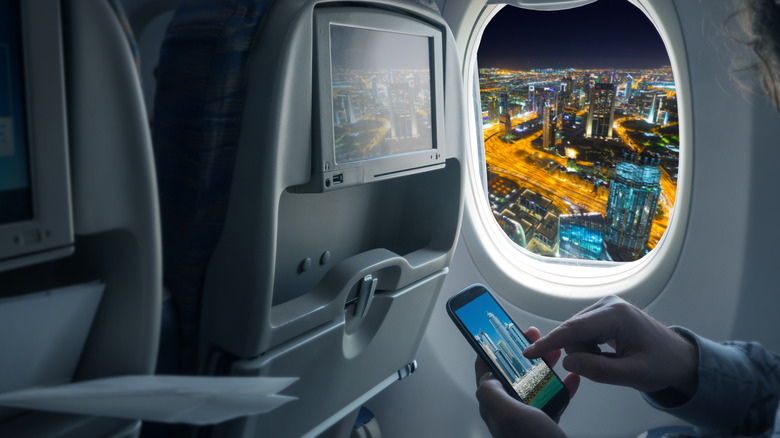Here's What Happens When A Device's Battery Erupts In Flames On A Plane
Lithium batteries are a vital part of the modern world. They power everything, from electric vehicles to laptops, to the very smartphone where you may be reading this article. Unfortunately, they come with a bit of a downside. If something goes wrong, they have the potential to swell, catch fire, and, at worst, even explode.
This is usually the result of extreme damage, a catastrophic charging error, or a malfunction with the battery itself — and when a battery fire happens, it's a serious issue. That problem gets more serious, and a little harder to handle, when you're on board a plane. Lithium battery fires are particularly dangerous because of a chain reaction known as "thermal runaway." Once the fire starts, the resulting heat destabilizes other battery cells and causes them to ignite too.
Lithium-ion battery fires while in the air are also becoming more common. The number of incidents has reportedly increased over 42% in the past five years. So what do airlines do when battery-related disaster strikes? Protocols are in place to ensure the safety of passengers, even if a phone or laptop's power cell decides to go boom.
How lithium battery fires are dealt with in the air
Planes have a number of fire-safety measures on board, and some of those options are available should a battery-related blaze break out. The first line of defence is the humble fire extinguisher. There are multiple extinguishers on each plane, and the crew is trained to use them effectively. If the fire is caught quickly enough, they may be all that is needed. Planes are also designed to be fairly fireproof, so while a fire may start it will have a hard time catching and spreading throughout the aircraft. In extreme circumstances on freighter aircraft, the pilot can depressurize the plane — which should starve the fire of air and slow its progress.
Lithium battery fires are particularly hard to deal with, as they can be self-contained. The fire's fuel and oxygen source both exist in the cell itself, so you can't put them out traditionally. Instead, the best method is to attempt to cool the battery cells that have yet to ignite and allow those that have to burn themselves out. Special burn bags exist, which contain the burning devices, while also acting to cool the batteries.
As an airline pilot explains in the above video, a lithium battery fire will usually result in the aircraft being diverted to the nearest airport. It will then land as soon as it possibly can so the battery in question can be removed from the plane. Pilots and flight attendants prepare for possible fires as part of their training sessions. As procedures are repeatedly drilled, the crew on board should know exactly what to do in the event of an emergency and take action before the problem can spiral out of control.
